Alphanumeric, Fixed English or Touchscreen Keypad?
Related Products
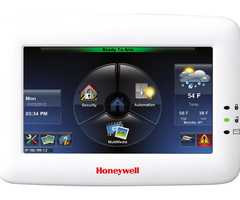
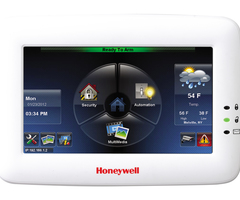

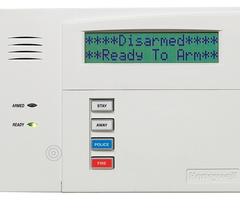
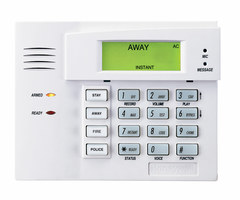
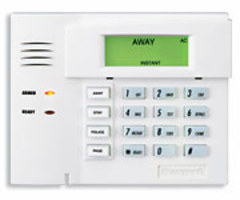
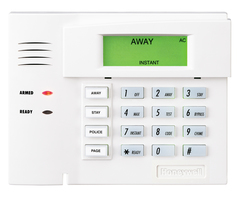
Related Categories
Description
In this video, Michael from Alarm Grid helps you determine if the keypad you have for your Honeywell VISTA Panel is an Alphanumeric Keypad, a Fixed English ...
Transcript
Hi, DIYers. This is Michael from Alarm Grid, and today I'm going to let you know if the keypad you have for your Honeywell VISTA System is an alphanumeric keypad or a fixed English keypad. Now, we actually have an alphanumeric and a fixed English keypad right here. The alphanumeric is the 6160, and the fixed English is the 6150. Now, right away, you can look at the keypads, and you can see a little bit of a difference. You see the 6160 is a little bit bigger. 6150 is a little bit smaller. But if you want to actually figure out whether or not they're different, you can always get into programming. And I'll show you that in a second. But, first, I want to just begin and say that if you're going to program a Honeywell VISTA System, you definitely want to do it on a 6160, an alphanumeric keypad. You don't want to do it on a 6150. The reason is because if you're going to do any deep-level programming changes, the screen's not going to show everything on a fixed English keypad. You're only going to get it on an alphanumeric keypad, like the 6160. You can see right away-- you get full text. You get "Disarmed," "Ready to Arm," right on your keypad, right there. So it's going to tell you everything you need to know. If you try to do deep-level programming on a 6150, you're going to be operating blindly. You're likely to make a mistake, and you could really mess up your system. So it's really discouraged to try to do deep-level programming on a 6150. You can technically do it, but we're not liable if you mess up your system. So, really, only do deep-level programming on a 6160 alphanumeric keypad. Now, I'm going to go into programming right here and show you how they look different. They're connected to the same system right now. So everything I do on the 6160 is also going to show up on the 6150, for demonstration purposes. They're connected to the same panel. But I'm going to go into programming right now. And to do that, I'm going to enter the installer code. A default installer code on a Honeywell's System is 4, 1, 1, 2. And then I'm going to enter 800, 8, 0, And you're going to see I get Installer Code 20 on the alphanumeric keypad, the 6160. This is going to let me know what I'm doing when I'm in programming. Now, if you take a look at the 6150, it just says 20. So I'm going to go into zone programming right now, that's star 56. And you see I'm getting the options here on the 6160, the alphanumeric keypad. I know what I'm doing as I'm going through programming. If I were working on the 6150 right now, I'd be going blind. So I wouldn't know what I'm doing. I could make a mistake. I wouldn't know what menu I meant. I could enter something in wrong. And I could really mess up my system. So you don't want to do that. So I'm going to just kind of go through some menus here. You see it says stuff as I'm going along. I'm not going to go too deep into this but 0, 0 to exit out. Then star, 99 to exit programming. So, as you can see, that's going to give me a lot more to see. It's going to give me a lot that I can look at. You want to program on this. Now, I can still enter programming on this. I'm going to show you right here. 4, 1, 1, 2, 8, 0, 0. And as you can see, I'm still in programming. If I really wanted to, star 56-- I'm actually in zone programming right now. And that's fine, but it's not going to show me what's going on. So you're going to feel a lot more comfortable if you try to do programming on your 6160, rather than a 6150. I'm going to go ahead and exit out of this. Let's do 1, 0, 0, star, 99. And I do want to point out that the 6150-- you can still use it for arming and disarming. You can still use it for little things. You can backdoor with this keypad. That'll work fine. It's just, if you're doing the deep-level programming, then you really want to use a 6160. You want to use an alphanumeric keypad. But if you have a 6150, keep it around. I mean, it's a good secondary keypad. It's just, if you want to make deep-level programming changes, then you're going to want to use the 6160. You're going to want to use an alphanumeric keypad. Now, you might also have a touchscreen keypad with your VISTA System. Now, you can usually tell, pretty easily, whether you have a push-button keypad or a touchscreen keypad. You can look at them right away. I mean, these have push-buttons. You know that-- you can see a keypad on the keypad right here. And you enter the numbers, and it's pretty easy to tell what it does. But if you have a touchscreen keypad-- We actually have one right here, a third keypad connected with our VISTA System. We have a Tuxedo Touch. And there's actually two main touchscreen keypads that are used with VISTA Systems-- the Tuxedo Touch, like we have here, and the 6280. The difference between these is the Tuxedo Touch has Z-Wave built in. So if you're doing home automation, smart home stuff, then this is a great keypad to have. Now, like I said, it's a touch screen keypad. You touch the screen, and it controls the keypad. So what you can actually do, though, is you can actually use this or a 6280 to program your system, just like you would an alphanumeric keypad. The Tuxedo Touch has a feature called Console Mode that lets it behave just like a 6160, just like an alphanumeric keypad. So it's good if you want to make programming changes on your Tuxedo Touch. So what you're going to do to get into Console Mode if you want to have this operate as an alphanumeric keypad for making programming changes on your VISTA System-- you're going to go to Security, and then you're going to go to More Choices down here in the corner. And then you go to Console Mode. And, as you can see, it's just like this. "Disarmed," "Ready to Arm." "Disarmed," "Ready to Arm." You can do the same stuff. I'll show you. You do installer code 4, 1, 1, 2, 8, 0, 0. And, as you can see, I'm in programming, just like if I were doing it here. And I'm not operating blindly, like I was on the 6150. I can make deep-level programming changes. Star, 56-- And, see, I'm in the same menu. "Set to Confirm?" I'll do '"Yes," and then I'll exit 0, 0. And then star, 99 will take me out of programming. And now, once I do this, it's going to reset the keypad. That's normal. This is what happens when you do programming on a Tuxedo Touch. It does do some resetting, which is fine. But I'm done showing you everything, so I'm going to go ahead and do that. It's actually not letting me exit out of programming right here so-- OK. I guess it just took a second. Star, 99-- That was a bit weird, but I guess there was a delay. And now it's going to reset the keypad, now that I've exited programming. There's just one last thing I want to mention about a Tuxedo Touch. You can use it for everything that you would on an alphanumeric keypad. But the one difference is that you can't do the backdoor method on the Tuxedo Touch. You can only do it on the 6160 or the 6150, or any other variants. The 6160RF, 6150RF-- anything like that. You can't backdoor on the Tuxedo Touch. And the reason for that is because you actually have to make in some keypad commands immediately after the system boots up. And with the Tuxedo Touch, it actually takes a couple of minutes for it to get going. So you won't be able to get to the console mode in time to do this. So if you want it backdoor your system, you have to do a 6160 or a 6150, or any other variants. So even if you have a Tuxedo Touch-- I know they're great for arming, disarming-- the touch screen's really inviting. It's really nice to use-- you'd still want to keep one of these around. If you ever get locked out of programming, then you're going to want to use one of these. And to prevent yourself from getting locked out of programming, always use star, 99 to exit programming. Don't use any other command. That will mess up your system. Always use star, 99 to exit programming. So that's the difference between an alphanumeric keypad, a fixed English keypad, and a touchscreen keypad. If you've found this video helpful, please click the Like button below. Also, make sure to subscribe to our channel if you want updates on future videos. And you can check out our website, alarmgrid.com. If you want to send us an email, support@alarmgrid.com. Hope you enjoyed this video. Thanks. Have a great day. Bye.
- Uploaded


